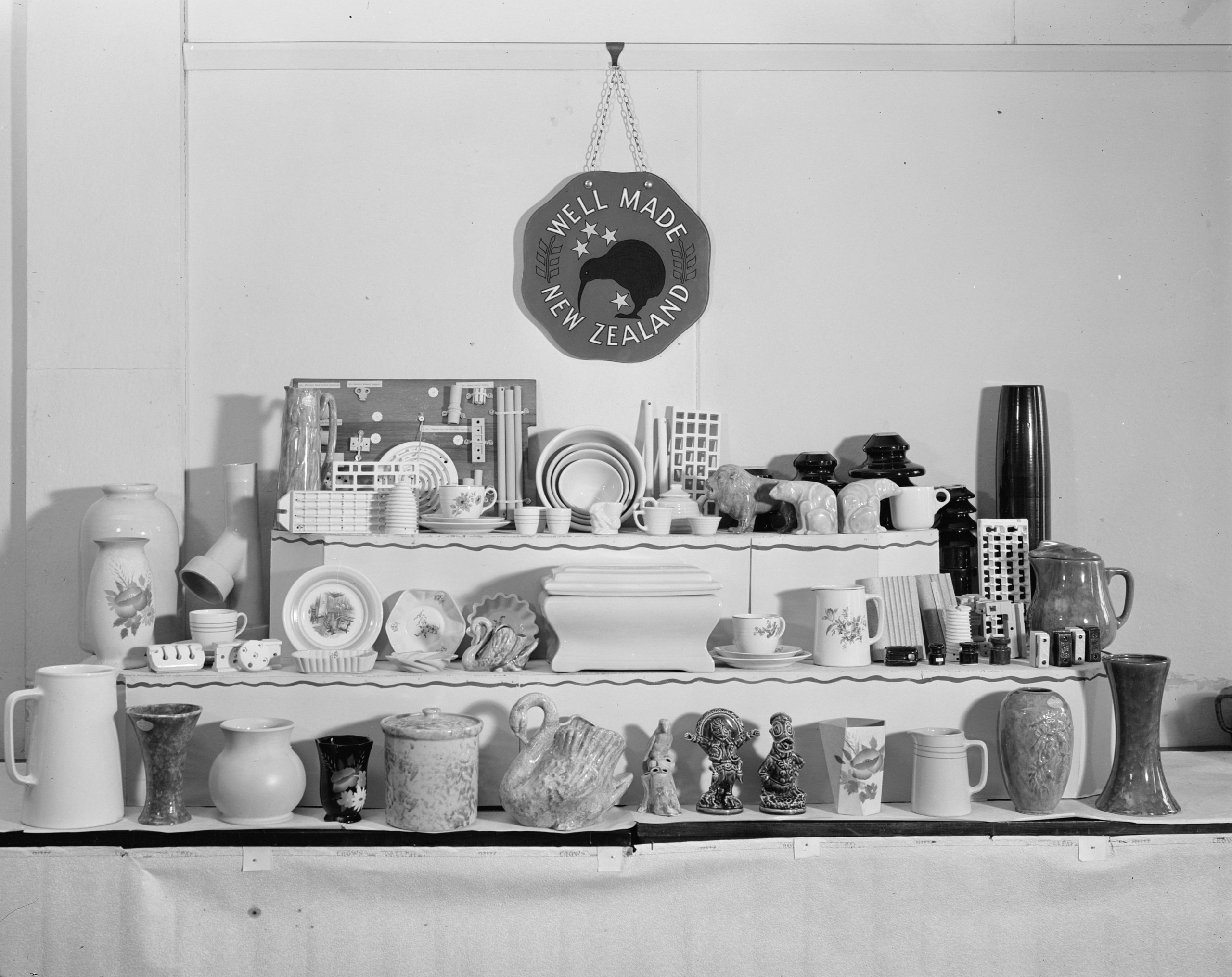
New Zealand ceramics exhibit, Wellington – Photograph taken by Walker and Wilson. National Publicity Studios. June 1948. Tourist and Publicity Collection. Ref: 1/2-034175-F. Alexander Turnbull Library, Wellington, New Zealand.
Alexander Turnbull Library | National Library of New Zealand | Te Puna MÄTauranga o Aotearoa
www.natlib.govt.nz
History
We are Making – the future shapes- continuing the journey of these pieces- so popular they outlast the Makers who originated the work- to your collection, and the collections years into the future.
Excellent sources of the history of New Zealand Ceramics and Pottery is found at these sites;
Te Toi Uku – The Crown Lynn and Clayworks Museum www.tetoiuku.org.nz
Te Papa – The Museum of Aotearoa – www.tepapa.govt.nz
The publications of Val Monk, and Gail Henry
These are good starting resources.
The Crownlynn.kiwi Project: Making History, Crafting Collectables
Imagine stepping into a world where history is not confined to books but lives and breathes in every piece of ceramic art. That’s the vision behind the Crownlynn.kiwi Project—a working museum that’s rewriting the story of New Zealand ceramics.
A Journey Through Time: New Zealand’s ceramic industry was once a powerhouse. It all began with Crown Lynn, a name synonymous with quality and craftsmanship. Crown Lynn, once the largest ceramic factory in the Southern Hemisphere, shaped an era of creativity and innovation. Titian Pottery, a beloved family business, was woven into this rich tapestry, contributing to the legacy.
Preserving the Legacy: When the doors of the Crown Lynn factory in New Lynn, Auckland, closed in 1989, a treasure trove of history was scattered far and wide. But champions emerged to safeguard this heritage. Catherine Anselmi and Bruce Yallop played pivotal roles in keeping a collection of beloved shapes alive, even amidst the challenges of factory closure. Catherine’s story is best told in her words at http://catherineanselmi.com/portfolio/crown-lynn/?portfolioCats=26
Studio Ceramics – A New Chapter: Studio Ceramics continued this legacy in West Auckland, with a team that included many Crown Lynn veterans. It all began with Christine Harris designs and evolved through collaborations with various artists. In 2006, the iconic Forrest, Fauna, and Foreshore range, designed by Bruce Yallop, captured the essence of New Zealand’s natural beauty.
Preserving the Past for a Thriving Future: In 2017, Studio Ceramics closed its doors after a challenging decade. But the story didn’t end there. Stepa.nz stepped in, acquiring a valuable collection of molds and expanding its reach to preserve the majority of the catalog. Now, they’re on a mission to source even more historic molds.
Creating a Living Museum: The Crownlynn.kiwi Project is more than a collection; it’s a living museum. It’s where history meets commerce, where heritage thrives, and where careers find new meaning. We share our knowledge with academic museums, promote new designs, and forge fresh opportunities while crafting new editions of beloved iconic works.
Join us on this journey through time, as we write history and craft a future where the legacy of New Zealand ceramics lives on. Explore our project and be a part of our exciting vision for a vibrant and enduring heritage: Crownlynn.kiwi
Making History – A Working Museum
Our vision is to make new editions of iconic NZ ceramics with new exciting projects – developing a library of original molds – complimenting and working with historians – providing a supply of genuine NZ Made to deter fakes and forgeries.
The Crownlynn.kiwi Project is focused on this collection and preserving skills – the vision of a working museum is grounded in commercial business- providing meaningful profitable opportunity for careers.
Sharing information with accademic Museums-promoting new design and developing fresh opportunities are equal to creating new editions of much loved iconic work.
Crown Lynn – the Origins
Reprinted with permission © Valerie Ringer Monk, ‘Crown Lynn Collector’s Handbook’, Penguin Books NZ, 2013. Available for purchase here.
In 1925, a group of West Auckland brick and pipe manufacturers united to form the Amalgamated Brick and Pipe Company, centralising operations in New Lynn. Tom Clark, son of managing director Tomas Edwin Clair, joined the farm as a labourer during the Depression in the 1930’s and soon led a move to diversify into items more high-value than bricks and pipes. Thus the “Special Department” was born – at first making hexagonal dry-pressed porcelain tiles and electrical components.
In the very early 1940’2, Clair and his colleague Ray Ockleston began making household ware, which required completely different techniques and raw materials. By 1942, the factory was making domestic ware on a general scale. While production was still experimental, the US Army ordered thousands of bowls and mugs for their troops stationed in the South Pacific during the Second World War. This ware was decorated with the trickle-glaze technique, which soon became a Crown Lynn signature. In the mid 1940’s, the company first started using the name ‘Ambrico’, a combination of the initials of the parent company, Amalgamated Brick and Pipe Company.
The English staff and new materials and techniques enabled the factory to produce ware that was hand decorated with gold and imported lithographs. This signalled a move from more utilitarian pieces, and a design department under New Zealander David Jenkin was established in 1948. By this time half of Crown Lynn’s production was exported to Australia. However, changes to the Australian exchange rate triggered a slump in export markets and the company struggled to survive. The employment of specialist hand potters such as Ernest Shufflebotham, Daniel Steenstra and Mirek Smisek, and innovative decorator Frank Carpay helped keep the business afloat.
Towards the end of the 1950’s the market expanded again, partially due to government imposed import restrictions, and Crown Lynn grew rapidly, gaining a near monopoly in New Zealand. In was in the early 1960’s that Crown Lynn took off. Previously, hand decorating with imported lithographs or hand painting with gold or coloured bands had been the norm, but now new machinery and techniques allowed for more use of New Zealand designs, automated decoration and faster production. Importantly, new Murray Curvex machines allowed home-grown designs to be printed directly onto plates and other flatware. Production soared and the company exported to the Pacific Islands, Australia, North America and South Africa. Backstamps were proudly New Zealand, rather than the ‘British’ series of the 1950’s. Through the 1960’s, manufacturing continued to increase and by the 1970’s Crown Lynn and reached its highest output, with around 500 staff turning out 15 million pieces a year. The export market, especially in Australia, was in good heart. The Crown Lynn group began to expand and in 1973 owned around 50 subsidiary companies. In 1974 the ever growing conglomerate was named Ceramco, although the Crown Lyn brand was retained.
By the late 1970’s the dream was fading. Both domestic and overseas markets weakened as the 1980’s economic downturn bit deeper and the government lifted the import restrictions. Despite the best efforts of staff, sales continued to decline and workers were laid off. Much of the surplus product was sold in a network of 12 Crown Lynn second shops. However, production continued. In September 1988, an international newsletter warned that warehouses were overstocked by one million pieces. Nevertheless, the factory was continuing to make 600,000 pieces a month. In May 1989, the remaining 220 staff were told the factory was to close. Machinery was packed up and sent to Malaysia, and the factory site was bulldozed and sold.
Crown Lynn – gone yet still going forward!
Enter Catherine Anselmi.
You can read about how Catherine’s work and journey here.
Crown Lynn – the Future
The Collection on this site are now owned by Mathew Nisbet, produced under the Stepa.NZ since the closure of Studio Ceramics in 2017. Crownlynn.kiwi is a venture focusing on building a central collection of historic moulds to be passed forward, encouraging new work from profits.
The Legacy Forward page explains our project target to pass this collection ahead for generations.
IF WE LOVE IT AND PRESERVE IT – IT BECOMES A HISTORY. IF WE HONOUR THIS, IMPROVING AND ADDING, LEARNING FROM OUR PAST IT BECOMES A TRADITON.
